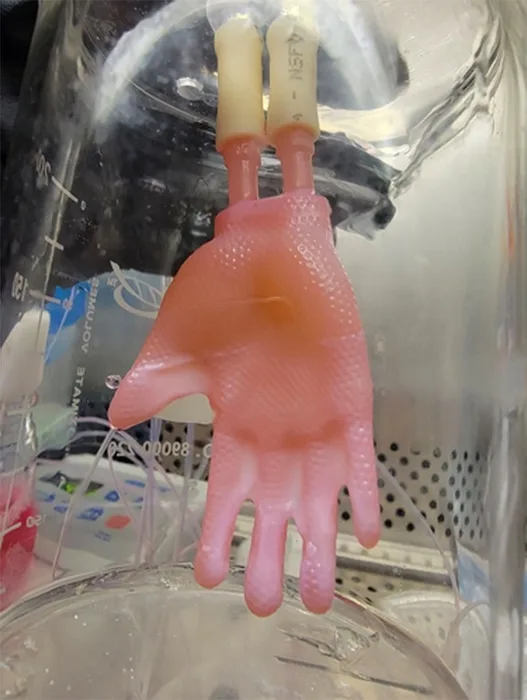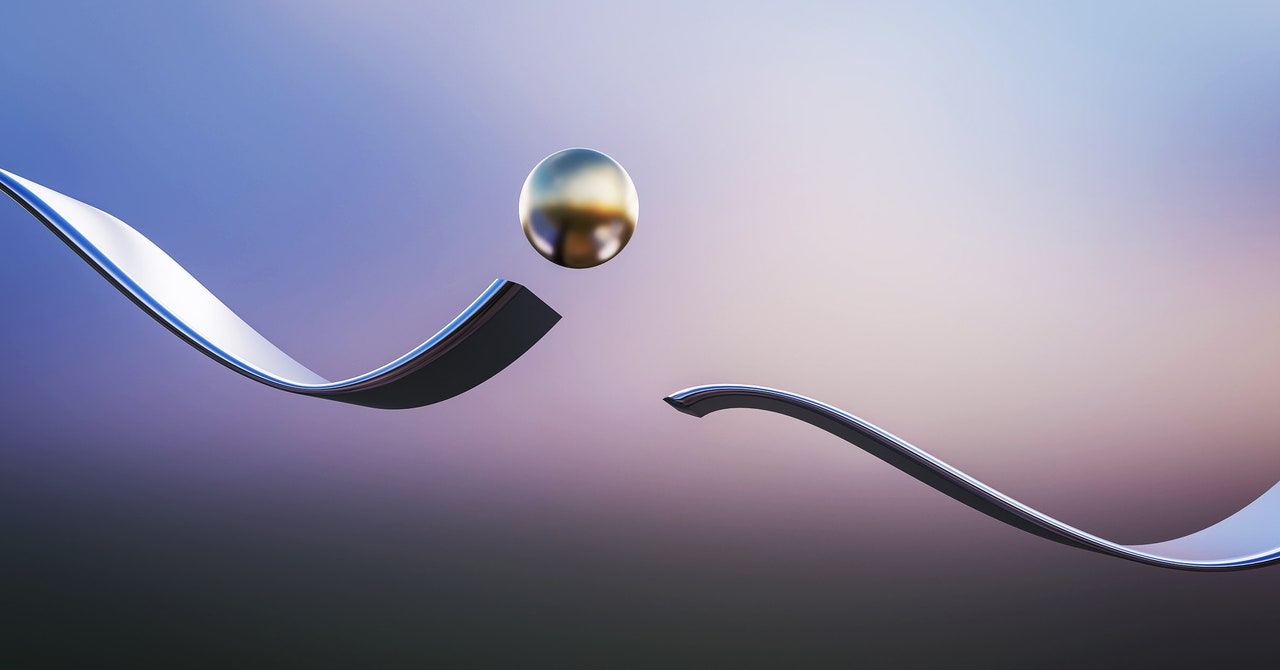The science of grafting skin has come a long way from the days of scraping it off one part of a patient’s body and slapping it back on somewhere else to cover a nasty burn or injury. These days grafts are commonly bioprinted like living inkjets using the patient’s cultured cells to seed the growing process, down to the vascularization. The primary shortcoming of these printed grafts is that they can only be produced in flat sheets with open edges. This method “disregard[s] the fully enclosed geometry of human skin,” argue a team of researchers from Columbia University. Instead, they’ve devised a novel means of producing skin in virtually any complex 3D shape they need — from ears and elbows to entire hands printed like a pair of Buffalo Bill’s mittens.

Alberto Pappalardo and Hasan Erbil Abaci / Columbia University Vagelos College of Physicians and Surgeons
The team published their findings, “Engineering edgeless human skin with enhanced biomechanical properties,” in the January issue of Scientific Advances. They explained how they engineered, “the skin as a fully enclosed 3D tissue that can be shaped after a body part and seamlessly transplanted as a biological clothing.”
“Three-dimensional skin constructs that can be transplanted as ‘biological clothing’ would have many advantages,” Dr. Hasan Erbil Abaci, lead researcher and assistant professor of dermatology at Columbia University, said in a recent press release. “They would dramatically minimize the need for suturing, reduce the length of surgeries, and improve aesthetic outcomes.”
What’s more, these uniform grafts have shown superior performance, both mechanically and functionally, than their patchwork alternatives. The Columbia team has dubbed the grafts “wearable edgeless skin constructs” (WESCs). Ok, but can you eat them?
The process of making these skin prosthetics isn’t that far off from the existing techniques which result in flat slabs of skin. The transplant site is first scanned with a 3D laser to create a digital facsimile of the structure. That data is worked through a CAD program to generate a hollow wireframe of the appendige and then printed. This serves as the scaffolding on which the patient’s cultured cells will grow. It’s coated with skin fibroblasts and collagen then covered by an outer layer of keratinocytes (which make up the epidermis) and growth medium to feed the cells as they mature. As with making flat sheets, the entire process requires around three weeks for the cells to fully set up and be ready for transplant.
Initial lab tests with mouse models were encouraging. “It was like putting a pair of shorts on the mice,” Abaci said. “The entire surgery took about 10 minutes.” Don’t get too excited, mouse skin is not people skin. It heals differently enough that additional animal studies will be required before we start trying it on humans. Such tests are likely still years away.
All products recommended by Engadget are selected by our editorial team, independent of our parent company. Some of our stories include affiliate links. If you buy something through one of these links, we may earn an affiliate commission. All prices are correct at the time of publishing.
#Columbia #researchers #bioprint #seamless #skin #grafts #burn #patients






